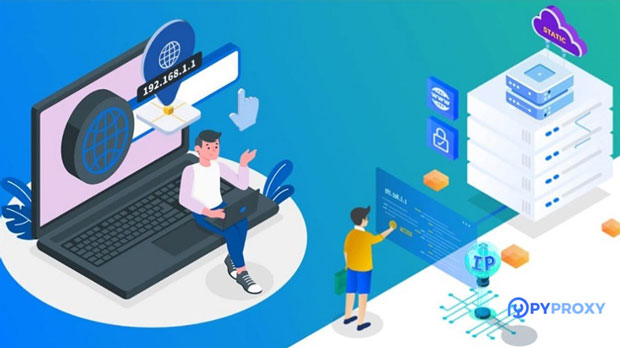In today's digital age, optimizing session management and concurrent connections is crucial when using sock s5 proxies, especially for users based in the United States. The socks5 proxy protocol allows users to route their internet traffic through a third-party server, providing enhanced security, anonymity, and flexibility. When used efficiently, it can significantly improve performance, reduce latency, and increase the overall user experience. This article delves into best practices and techniques for managing sessions effectively and optimizing concurrent connections in SOCKS5 proxies, with a focus on increasing stability and performance while handling multiple connections simultaneously. Whether you're using SOCKS5 for web scraping, gaming, or secure browsing, these techniques will help you maximize your proxy's capabilities. 1. Understanding SOCKS5 Proxy and Its CapabilitiesSOCKS5 is one of the most versatile proxy protocols available, allowing users to bypass geo-restrictions and access content from any location. Unlike HTTP proxies, SOCKS5 supports a wider range of protocols and can handle any type of internet traffic, including emails, torrents, and video streams. Its key strength lies in its ability to route traffic through a secure server, ensuring that the user's identity remains private.One of the challenges with SOCKS5 proxies, however, is ensuring optimal session management and concurrency. Since SOCKS5 works by establishing a direct communication channel between the client and server, proper handling of multiple connections becomes essential for smooth performance.2. Session Management Strategies for SOCKS5 ProxyEffective session management is crucial for ensuring that each connection is stable and fast. SOCKS5 proxies often handle multiple requests from different clients, which can lead to congestion if not managed properly. Here are some key strategies for improving session management:2.1 Implementing Session PersistenceSession persistence ensures that once a user establishes a connection, it remains open for subsequent requests. This reduces the overhead of reconnecting for each new request and can improve the proxy's overall performance. By keeping sessions alive, users can benefit from a more efficient connection, which is particularly beneficial in activities like web scraping or online gaming where continuous connections are needed.2.2 Load BalancingTo handle a high volume of requests and avoid overloading a single proxy server, load balancing can be used. Load balancing distributes incoming traffic across multiple proxy servers, which can prevent any one server from becoming a bottleneck. This not only improves performance but also enhances session reliability by ensuring that each session is routed to a less congested server.2.3 Session Timeout ConfigurationSetting appropriate timeout values for SOCKS5 proxy sessions can help manage resources effectively. If a session is idle for too long, it should be terminated to free up resources for active users. However, if the timeout is too short, legitimate sessions might get cut off prematurely, leading to unnecessary disruptions. Fine-tuning session timeout settings ensures that the proxy remains efficient while minimizing session drops.3. Optimizing Concurrent Connections in SOCKS5When dealing with SOCKS5 proxies, one of the biggest challenges is managing concurrent connections. Handling multiple simultaneous requests can lead to congestion and slowdowns if not optimized. Below are a few techniques for optimizing concurrent connections:3.1 Adjusting Connection Pool SizeEach socks5 proxy server has a finite number of concurrent connections it can handle at any given time. By adjusting the connection pool size based on traffic demands, users can ensure that the server isn't overwhelmed. Increasing the connection pool size can be useful for high-demand tasks, such as bulk data processing or mass web scraping, while reducing it helps conserve resources when traffic is lower.3.2 Connection MultiplexingConnection multiplexing allows multiple requests to be sent through a single connection, reducing the need for multiple connections to the same server. By leveraging multiplexing, users can efficiently handle large volumes of traffic without overloading the server. This is particularly effective in applications like automated data scraping, where multiple small requests are made to the same target.3.3 Use of Threads for Parallel ConnectionsIn scenarios that require handling numerous concurrent connections, employing threads can improve the ability to manage multiple connections simultaneously. By using multi-threading, each thread can independently handle different proxy connections, ensuring that the server can perform tasks concurrently without crashing or lagging. Proper thread management also prevents excessive use of resources, allowing the server to handle more connections without sacrificing performance.4. Monitoring and Maintenance of Proxy ConnectionsEffective session management and concurrent connection optimization require continuous monitoring. Regular monitoring of proxy performance helps identify any slowdowns, interruptions, or errors before they escalate into more significant issues. Below are some strategies to ensure your proxy continues to function optimally:4.1 Real-Time Performance MonitoringBy using tools that monitor real-time performance, users can track the health of their SOCKS5 proxy servers. These tools provide insight into connection speeds, error rates, and server load, helping users spot issues early. Proactive monitoring allows users to quickly address any performance degradation before it affects the user experience.4.2 Proxy Server MaintenanceRegular maintenance is essential for keeping SOCKS5 proxies running smoothly. This includes checking for any server misconfigurations, updating software, and performing security patches. Keeping the proxy server up to date ensures that vulnerabilities are addressed, and the proxy continues to perform at optimal levels.5. Troubleshooting Common SOCKS5 Proxy IssuesDespite the best optimization efforts, issues can arise when using SOCKS5 proxies. Below are some common problems users may encounter and their solutions:5.1 Slow ConnectionsSlow connection speeds can occur when the proxy server is overloaded or when session management is not configured correctly. To resolve this, consider using a faster server, increasing the connection pool size, or adjusting session timeout settings.5.2 Connection DropsFrequent connection drops often occur when session timeouts are too short or when the server is under heavy load. Increasing the session persistence or balancing the load across multiple servers can help alleviate this issue.5.3 Proxy Server OverloadIf a proxy server becomes overloaded with too many connections, performance can significantly degrade. This can be prevented by using load balancing techniques and adjusting the connection pool size to match the current demand.Efficient session management and concurrent connection optimization are key to maintaining a smooth and reliable experience when using SOCKS5 proxies. By implementing strategies such as session persistence, load balancing, and connection multiplexing, users can ensure that their proxy servers perform optimally. Regular monitoring and maintenance will further enhance performance and help prevent potential issues. With these techniques, users can maximize the capabilities of their SOCKS5 proxy, improving performance, reducing latency, and ensuring a more secure and reliable browsing experience.
May 28, 2025
![arrow]()



















































